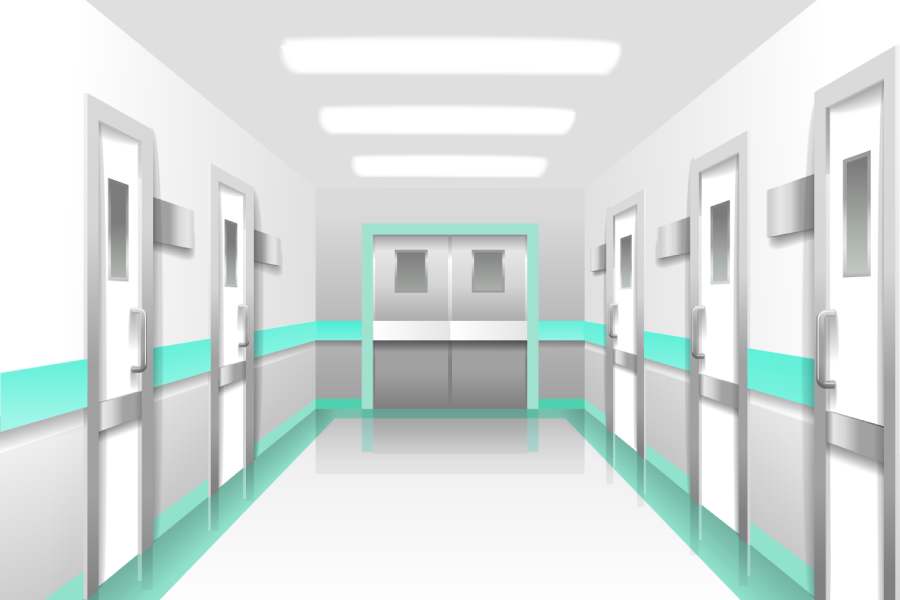Ambulatory Surgery Center Requirements
An ambulatory surgery center should be taken with all the prosecutions and needed requirements for it to function properly. There are lots of beforehand planning and procedures to go through to provide a safe and clean environment patients can rely on. This article will inform you more about the ambulatory surgery center requirements.
Continue reading to learn more about ambulatory surgery centers and how the licensing and certification work. Discover the physical facility, patient care and safety, as well as the staffing and personnel and all remaining requirements an ASC facility must provide.
Ambulatory Surgery Center
Ambulatory surgery centers, also known as ASCs, are specialized, modern healthcare facilities focused on providing outpatient surgical care. Patients receive professional medical care and diagnostic and preventive procedures in these medical centers.
Ambulatory surgery centers have altered the outpatient medical experience for millions of people. Now, patients are provided with a more convenient environment than hospital-based procedures, with positive patient outcomes and high-quality medical care.
These types of facilities specialize in surgeries that don’t require an overnight stay. Some of the most common procedures done in an ASC are the following:
- Ear, nose, and throat procedures – Include sinus surgery, tonsil removal, and the removal of benign lesions.
- Ophthalmology procedures – Include eye surgeries such as cataract removal, LASIK, and glaucoma treatment.
- Vascular procedures – Include varicose vein treatment as well as pacemaker battery changes.
- Orthopedic procedures – Include injections, minor fracture repairs, and minor joint surgery.
- Gastroenterology treatments – Include endoscopies, colonoscopies, and polyp removal.
- Urology and proctology procedures – Include kidney stone treatments, vasectomies, and prostate biopsies.
Ambulatory surgery centers offer more specialized care but not all services a hospital can. However, treatments in this facility may provide lower costs, reduced stress, and faster, high-quality, and more convenient patient care.

Ambulatory Surgery Center Requirements
Licensing and certification
For an ambulatory surgery center to enter into a written agreement with CMS, it must meet Medicare criteria and approval, known as certification. The certification is mandatory for the medical center to receive facility fees from the government and other payers. If you want to know more about getting such certification and building and organizing your ASC, you probably need an ASC Consulting service.
Each state Department of Health has its authority, regulations, and requirements. For an ambulatory surgery center to reach a written agreement with CMS, it must be eligible and meet the Medicare criteria and approval. This is also known as “certification”.
Forty-three states require licensure and certification for an ambulatory surgery center to function. These states specify the criteria that these medical centers must meet the licensure requirements before accreditation.
Process of licensure
The licensure process includes several surveys and approvals by the State Department of Health. Federal and state governments have specific requirements for the physical and internal environment of an ambulatory surgery center.
Additionally, a host of rules and regulations covering procedures performed, as well as staffing and administrative functions, are also needed for licensure.
An ambulatory surgery center is one of the most highly regulated Health Care Entities, so many regulations must be met. In order to prepare for the requirements, it’s best to create a detailed and efficient task list.
Here’s what your list should include:
- Research and identify individual state requirements for Certificate of Need (CON) filing or exemption.
- Legal issues
- Articles of incorporation or operating agreements
- Shareholders agreement
- Design and construction plans
- Name of the facility and Tax ID number
- Determine governing body and organizational chart
- By-laws
- Staff recruitment
- Medical staff regulations and rules
- Loan and line of credit
- Billing service
- Proposals on equipment and supplies
- State license applications, AAAHC applications, and Medicare applications have been filed at least 90 days before construction finalization.
- Requesting for all other payor applications.
Process of certification
Once the ambulatory surgery center meets the licensure requirements, it must also meet the CMS Conditions for Coverage. The requirements that must be satisfied in order to apply for Medicare Certification are listed in the Federal Register at 42 CFR 416.
The next condition that a center must meet is the ability to extinguish outpatient procedures. The distinct entity can be independent or under a hospital’s common ownership, licensure, or control.
Moreover, some specific ambulatory surgery center certification requirements for coverage for CMS include:
- Governing Body and Management – Assumes full legal accountability for all activities.
- Surgical Services – Physicians must be entirely credentialed and approved by the Governing Board.
- Evaluation of Quality – Continuous quality, improvement, and recognition of risk.
- Safety Measurements – Separate safety preparedness plan with authorities and incidence reporting.
- Medical Staff – Legally and professionally qualified.
- Nursing Services – RN trained in CPR must always be available for patients at the ASC.
- Medical Records – Complete, comprehensive, and accurate medical records for all patients.
- Pharmaceutical Services – DEA license to dispense narcotics.
- Laboratory – Must have a contract with a Medicare-certified laboratory and a CLIA waiver to perform limited tests.
- Radiological Services – Must be contracted with a Medicare-certified radiology department.
- Management Programs – Must have peer and chart review, as well as credentialing with primary verification source.

Physical facility requirements
When building an ambulatory surgery center, there are a few ambulatory surgery center building requirements owners must meet in order for it to function legally and safely. An effective ASC should be financially successful, adaptable, and practical for both patients and medical personnel.
The healthcare facility should be a high-performance center focusing on patient happiness, staff retention, and efficiency. This may lead to lower operating costs as well as correspondingly higher profit potential.
Here are just a few physical facility requirements every ASC should develop:
- Outpatient operating room
- Recovery area
- Elevators
- Air-conditioning, heating, and ventilating systems
- Smoke, fan, and damper control
- Plumbing fixtures
- Fire pump
- Nurses’ calling system
- Fire alarm systems
- Emergency electrical service
- Fire protection
- Medical gas
Outpatient operating room
Every ambulatory surgery center is required to have at least one operating room with a clear floor area of 270 square feet (25.08 m2). However, only these sizes or larger rooms may be listed as operating rooms. Any smaller areas won’t be considered such rooms for purposes of licensure.
Recovery area
Only the phase I post-anesthesia recovery positions will be considered and listed as recovery positions or areas for licensure.
Elevators
All ambulatory surgery centers must have at least one 2,500-pound capacity elevator. This elevator should also be sized to accommodate an ambulance stretcher and identified with such a sign.
Air-conditioning, heating, and ventilating systems
Air-conditioning, heating, and ventilating systems play a crucial role in medical facilities. These systems provide a comfortable and convenient environment for both patients and medical staff.
Additionally, they contribute to maintaining a clean, germ-free area for the well-being of everyone involved.
Air-handling equipment should be included in every part of the facility to maintain filter efficiencies and relative air pressure.
Smoke, fan, and damper control
The requirement of smoke control, fan, and damper control is to protect medical staff and patients. They allow them to safely evacuate or relocate in a reasonable time period. These systems are not required to maintain a tenable environment or protect the facility’s content.
These systems can either be active or passive. They may consist of simple components like an open ventilation window with air system shutdown and isolation.
Furthermore, fan control should not interfere with exhaust systems that release ethylene oxide or other hazardous chemicals and fumes. A healthy, clean, and safe environment is what matters most when installing smoke, fan, and damper systems for both patients and staff.
Staffing and personnel requirements
In an ambulatory surgery center, the staffing and personnel slightly differ from a traditional hospital or medical facility. More than often, ASC staff provides all the duties that are expected from them and even beyond just direct patient care. Hiring personnel requires very careful consideration and flexibility.
The size and requirements of the facility will determine how many members of each category it will need. In order for it to function properly, designating each role to a specific title will help identify the person you need for that position.
Additionally, ASC administrators and leadership teams must ensure that candidates and staff have comprehensive job descriptions. The clearly defined responsibilities will collectively cover the entirety of the ambulatory surgery center’s operational responsibilities.
In this list, we’ll go over the primary and diverse functions of every member of an ambulatory surgery facility.
Front office personnel
Front office personnel may be required for several duties and obligations. Some of their most common responsibilities include:
- Reception
- Registration
- Medical records
- Scheduling
- Verification and authorization of benefits
- Patient collections
Additionally, these positions may perform some HR functions, payroll, benefits administration, and personnel file maintenance.
This staff must possess a unique set of skills that should never be neglected when special projects or mini-task force committees come along.

Nurses
Typically, a nurse is responsible for direct, medical patient care. Their job is to monitor patients’ conditions and processes while assessing their needs and providing them with the best possible medical care and advice.
Additionally, they are required to observe and interpret the patient’s symptoms and pass their data to physicians.
However, nurses may be tasked with additional roles and purposes in an ambulatory surgical center. This includes facility infection prevention and monitoring the center’s adherence to the infection control program.
Surgical technicians
Surgical technicians are absolutely required for almost every surgical center and hospital. These positions have vital responsibilities in preparing the operating rooms and ensuring all the necessary equipment is ready and assembled.
Due to the nature of the role, an ambulatory surgical center’s surgical technician may also function as a materials coordinator.
Organization and prioritization are vital skills for this role. Some of the most common responsibilities of this role include:
- Order supplies
- Check on special orders
- Receive products
- Document purchases
- Account for shipments received
- Remain on hand to cover procedures
Clinical staff
In addition to direct medical care duties and patient attendance, clinical staff may be obligated with many more duties and responsibilities. Examples of this include the following:
- Quality assessment and control
- Managing safety protocols
- Pharmacy ordering
- Data input
The personnel responsible for quality assessment and control will need allocated time to conduct research, run reports, compile items for meetings, assist with staff education, and more.
On the other hand, safety staff is responsible for conducting audits, assisting with staff education, and compiling items for meetings, among other duties.
The clinical staff is a vital part of a functional ambulatory surgery center.
Nurse managers
A nurse manager is obligated to direct patient medical care while also attending to their administrative duties. A facility nurse manager typically has and maintains managerial authority and control over the entire medical staff.
As the job title suggests, a nurse manager must possess expertise in medical care, management, and administrative duties. This calls for an organized nurse with complete harnesses for assisting the facility personnel in accomplishing daily, monthly, quarterly, bi-annual, and annual tasks.
Some additional duties that a clinical nurse manager may be obligated with are:
- Administrative and hiring responsibilities of clinical staff.
- Monitoring the use of implants.
- Corresponding reimbursement.
Patient care and safety requirements
As ambulatory surgical centers continue rising in popularity, patient care and safety should stay at the top of the priority list.
Thanks to innovative technology and medical equipment, ASCs are the most popular institutions for outpatient surgery procedures, including total joint replacements. These facilities must comply with various laws, rules, and regulations.
Since ambulatory surgery centers specialize in outpatient procedures, they can concentrate on patient safety and experience and provide an excellent record of safe and quality patient outcomes.
ASCs are required to maintain a strict sanitary environment and must establish and maintain protocols and programs for preventing infections.
Much like any other hospital, operating rooms, surgeons, nurses, medical staff, and professionals have a specific protocol in an ASC. By following a unique set of procedures and requirements, ASCs lead to excellent results for surgical patients.
Additionally, these facilities must conduct regular, comprehensive assessments to confirm the quality of medical care they provide to their patients.

Billing and coding compliance
When it comes to documentation compliance, there are many sources of regulation and oversight for ASCs.
Every facility should pay close attention to state licensure regulations, Medicare Conditions for Coverage, nationally recognized standards and guidelines, accreditation standards, standards of care, and best practices.
Additionally, every item must be documented at varying frequencies. This includes daily, weekly, monthly, quarterly, annual, and variable requirements.
The ambulatory surgery center has a well-defined payment classification system for every service provided in an outpatient procedure. Codes are translated to a standard flat bill by using unique ASC conversion factors.
Under the same guidelines, every claim can cover several outpatient procedures. Additional services, such as imaging, do not fall under separate bills but are paid in a single package system for each claim.
Moreover, payments differ from each procedure paid under a single claim. A Multiple Procedure Reduction policy applies, where the first procedure is paid at full price while additional procedures are paid 50% of the standard rate.
Medical documentation and record-keeping
An important step in maintaining compliance is accurate documentation and record-keeping. This is an imperative key factor in every ambulatory surgery center.
Medical record compliance and documentation must be a high-quality indicator tracked with a unique facility program. In these sectors, there is no room for errors or any issues. The outcomes must always be 100% compliant and accurate.
The purposes of medical record-keeping and documentation are the following:
- Records save and document a patient’s medical history and story by providing an illustrated timeline.
- It showcases how patient medical care decisions are made.
- The program delivers information on communication among caregivers and patients.
- It documents compliance with the ASC’s requirements, regulations, and standards.
- It documents that the ambulatory surgery center provides safe and effective care and environment.
- Keeping records and documents will create a legal paper.
- Keeping records can provide documentation for reimbursement.
- Record-keeping and documentation provide a retrospective review of patient care for QAPI activities and peer review.
Emergency preparedness and disaster planning
Ambulatory surgery centers must provide and imply all state, federal, and local emergency preparedness and disaster planning. The facility must establish and maintain preparedness programs in order to provide a safe environment for medical personnel and patients.
For this section, the ambulatory surgery facility must include, but not be limited to, the following requirements:
Emergency plan
An ambulatory surgery center must develop and maintain an emergency preparedness plan which must be reviewed and updated at least once every two years.
The preparedness plan must have specific requirements and procedures:
- The plan must be based on and include a documented, facility, and community-based risk assessment, implying an all-hazards approach.
- The plan must include strategies for solving emergency events identified by the risk assessment.
- The plan must have cooperation and collaboration with local, tribal, regional, state, and federal emergency officials to maintain a proper response during an emergency or disaster.
- The plan must address the patient population and the type of services the ASC can provide in an emergency. Additionally, it must provide continuity of operations, including delegations of authority as well as succession plans.
Communication plan
An ambulatory surgery center must develop and maintain a communication plan in accordance with federal, state, and local laws. Additionally, this plan must be reviewed and updated once every two years.
This plan must include:
- Personal and contact information of the medical staff, facilities providing services under the agreement, patients’ physicians, and volunteers.
- Contact information of the federal, state, and local emergency staff and other sources of assistance.
- Primary and alternative ways of communicating with ASC staff and emergency management agencies.
- A means to release patient information such as their location and condition under the care of the ASC.
- A means of providing information about the ASC’s need and ability to provide assistance.

Policies and procedures
The ambulatory surgery center must develop, maintain, and implement emergency preparedness policies and procedures. The program must be reviewed and updated at least once every two years.
The ASC policies and procedures must do the following:
- Follow the location of on-duty staff members and patients during an emergency. Additionally, the facility must record its specific location if relocated.
- Plan for safe evacuation from the ambulatory facility and all duties included.
- A means for a sheltered area in place for remaining patients, medical staff, and volunteers.
- A system of medical documentation that preserves, protects, and secures patient information.
- The use of volunteers and state and federal health care professionals to address surge needs during an emergency situation.
Training and testing
An ambulatory surgery center must develop and maintain an emergency preparedness training and testing program. The program must be reviewed and updated at least once every two years.
The ASC training program must:
- Training in emergency preparedness procedures and policies to existing staff, individuals providing on-site services, and volunteers.
- Provide an emergency preparedness training program at least once every two years.
- Maintain documentation and record-keeping in these emergency preparedness programs.
- Demonstrating programs for staff knowledge of emergency preparedness.
- If training emergency preparedness programs are updated, the ASC must provide proper training for updated procedures and policies.
The ASC must test the emergency preparedness program plan annually. The facility must:
- Participate in full-scale exercises that are community-based once every two years.
- Conduct a second additional exercise once every two years, the opposite year of the full-scale one.
- Test, document, and analyze the facility’s response to the drills, exercises, and emergency events, and adjust the center’s preparedness plan as needed.
Conclusion
Ambulatory surgery centers differ slightly from traditional hospitals and medical facilities. These modern facilities focus mainly on providing outpatient surgical care and giving patients the best possible experience.
However, there are many ambulatory surgery center requirements that must be followed in order to run a legal and functional facility. Understanding this process may make opening or running such a center easier.
The licensing, physical facility requirements, personnel, preparedness, and documentation are some crucial ambulatory surgery center credentialing requirements you must take into consideration.
We hope this article has provided you with useful information regarding ASC requirements.





